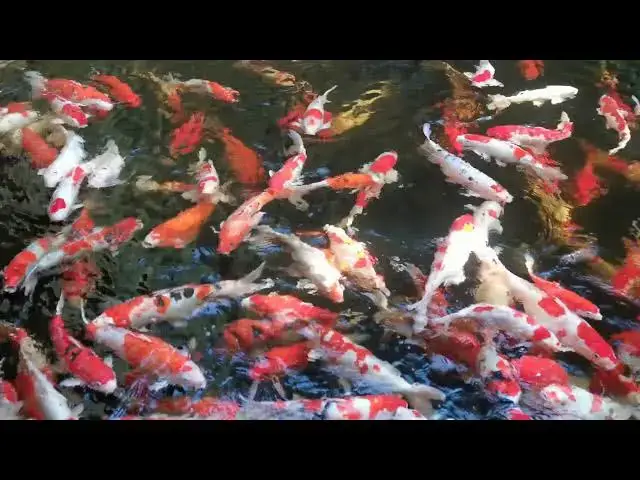Learn the proper feeding practices for koi fish during winter. This video explains how water temperature affects koi metabolism, provides guidelines on when to reduce or stop feeding, and offers tips for maintaining pond health in cold weather. Essential information for koi owners to keep their fish healthy through the winter months.
Show More Show Less View Video Transcript
0:00
winter koi feeding when to stop and how
0:02
to care for your fish as winter
0:04
approaches koi fish owners face a
0:06
crucial question should they stop
0:09
feeding their beloved fish completely
0:11
this video will dive into the
0:13
intricacies of winter koi care focusing
0:16
on proper feeding practices to ensure
0:19
your fish remain healthy during the
0:21
colder months koi fish are cold blooded
0:24
creatures meaning their metabolism is
0:27
directly influenced by the temperature
0:29
of their environment as water
0:31
temperatures drop aoi's digestive system
0:33
slows down significantly this
0:36
physiological change is at the heart of
0:38
the winter feeding dilemma many co
0:40
owners wonder if they should cease
0:41
feeding alt together when temperatures
0:43
plummet the answer isn't a simple yes or
0:46
no instead it depends on several factors
0:50
primarily the water temperature in your
0:52
pond when water temperatures fall below
0:54
50° F or 10° C koi enter a state of
0:58
semih hibernation their metabolism slows
1:01
to a crawl and they require very little
1:03
food to sustain themselves however this
1:05
doesn't necessarily mean you should stop
1:07
feeding them entirely for temperatures
1:09
between 50 and 41° F or 10 to 5° C you
1:15
can continue to feed your KOIN but do so
1:17
sparingly offer small amounts of easily
1:20
digestible wheat germ based food once or
1:23
twice a week this type of food is
1:24
specifically designed for colder water
1:26
temperatures and is easier for Koy to
1:29
process when their metabolism is slow
1:31
when water temperatures drop below 41° F
1:36
or 5° C it's generally advisable to stop
1:39
feeding your Co at these temperatures
1:42
their digestive system essentially shuts
1:44
down and any food consumed May rot in
1:47
their stomachs potentially causing
1:49
health issues it's crucial to monitor
1:51
your Pond's water temperature regularly
1:54
during the winter months use a reliable
1:56
Pond thermometer to keep track of
1:58
temperature fluctuation
2:00
and adjust your feeding schedule
2:02
accordingly remember overfeeding during
2:05
winter can be more harmful than not
2:06
feeding at all uneaten food can
2:09
decompose in the pond negatively
2:11
affecting water quality and potentially
2:13
harming your fish in addition to proper
2:15
feeding there are other important
2:17
aspects of winter Coy care to consider
2:19
ensure your pond has adequate depth
2:22
ideally at least 4 ft to provide a warm
2:24
zone for your fish to over winter keep a
2:26
section of the pond surface free from
2:29
Ice to allow for proper gas exchange
2:31
this can be achieved using a pond dcker
2:34
or airator regularly check your Pond's
2:37
water quality throughout the winter even
2:39
though biological activity slows down
2:42
ammonia and other harmful substances can
2:45
still accumulate especially in ponds
2:47
with many fish to summarize the key to
2:49
Winter KO feeding is moderation and
2:52
careful observation monitor your ponds
2:55
temperature closely feed sparingly when
2:57
temperatures are between 50 and 41° F
3:00
and stop feeding when temperatures drop
3:02
below 40 1° by following these
3:05
guidelines and maintaining good overall
3:07
Pond Health you can ensure your koi
3:10
survive the winter and emerge healthy in
3:12
the spring
#Pets & Animals
#Fish & Aquaria

